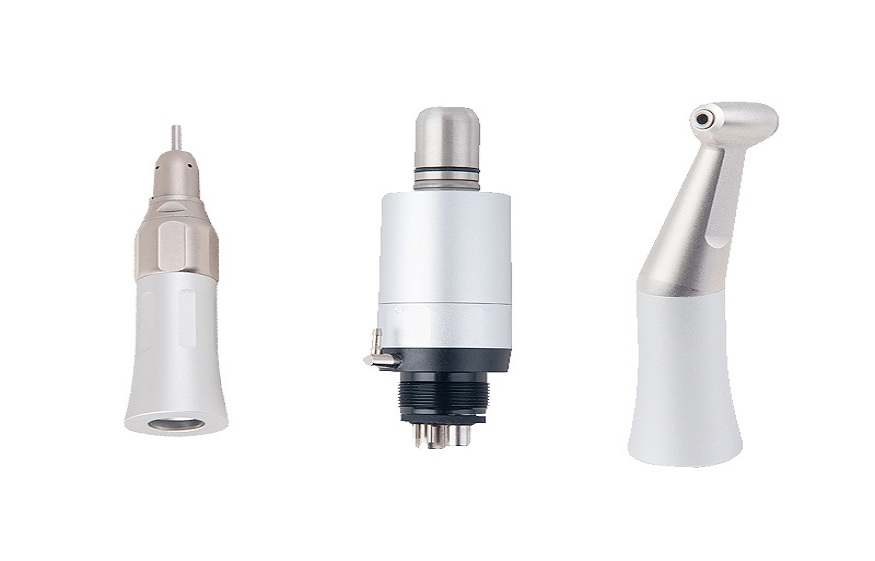How Regular Handpiece Maintenance Can Save Your Practice Money
5 min read
In any dental or medical practice, ensuring that equipment is operating efficiently and reliably is a priority. Among the most critical tools used daily are handpieces. These compact devices are essential for a wide range of procedures, from routine check-ups to complex surgeries. However, without proper care, these tools can wear down quickly, leading to costly repairs or replacements and significant disruptions in your practice. Regular handpiece maintenance is a simple yet effective way to prevent these issues, ultimately saving your practice both time and money.
The Importance of Handpieces in Your Practice
Handpieces are vital for delivering high-quality care. In dental practices, for example, they are used for everything from cleaning and polishing teeth to drilling and cutting. Given their constant use, it is no surprise that handpieces are prone to wear and tear. Their intricate mechanisms require proper maintenance to ensure optimal performance, reduce the risk of failure, and extend their lifespan.
The Consequences of Neglecting Handpiece Maintenance
- Higher Repair Costs: Like any piece of equipment, handpieces are subject to wear and tear. Minor issues, such as clogged air vents or worn bearings, can escalate into more significant problems that are costly to fix. Routine maintenance helps identify and address these issues early, preventing them from developing into major repairs.
- Frequent Downtime: Malfunctioning handpieces can cause costly downtime. You may have to cancel or reschedule appointments, causing inconvenience for your patients and potentially losing revenue. The cost of obtaining a replacement handpiece quickly or sending a malfunctioning tool out for repairs adds to the financial strain.
- Loss of Productivity: Malfunctioning handpieces can lead to significant delays in your practice. Procedures may take longer, and you may need to use backup tools. By performing regular maintenance, you can ensure that your equipment is always ready to work at full capacity.
- Decreased Patient Satisfaction: When dental handpieces are not functioning properly, it can lead to discomfort for patients. In dental procedures, a faulty handpiece can cause uneven pressure or vibrations, resulting in a less comfortable experience. Over time, patients may notice a decline in service quality and consider switching practices if issues with equipment persist.
- Shortened Lifespan: Handpieces are designed to last for many years, but without proper maintenance, their lifespan can be shortened. Bearings, seals, and other components can wear out prematurely due to the accumulation of dirt, debris, and inadequate lubrication. Regular servicing ensures that these parts remain in good working condition, prolonging the handpiece’s life and reducing the need for costly replacements.
How Regular Handpiece Maintenance Saves Money
- Prevents Expensive Repairs and Replacements
The most direct way regular handpiece maintenance saves money is by preventing expensive repairs and replacements. Small issues, such as a misaligned motor or a clogged air filter, can be easily fixed with routine maintenance. If left unchecked, these issues can escalate into major damage that may require costly repairs or a complete replacement.
In addition to saving on repair costs, regular maintenance can extend the lifespan of your handpieces. By keeping parts in optimal condition, your equipment will function more effectively over a longer period, reducing the need for frequent replacements.
- Minimises Downtime
When a handpiece breaks down unexpectedly, it can cause disruptions to your practice. You may have to reschedule appointments, and your staff may have to work with subpar equipment, resulting in longer wait times for patients. This downtime not only impacts revenue but also damages your practice’s reputation.
By investing time in regular maintenance, you can identify potential issues before they cause breakdowns. Routine inspections ensure that your handpieces are always in good working order, which minimises the chances of unexpected downtime and allows your practice to run smoothly without interruptions.
- Improves Efficiency and Productivity
Handpieces that are well-maintained perform at their best, enabling your staff to work more efficiently and complete procedures more quickly. A properly lubricated handpiece operates more smoothly, reducing resistance and improving precision. This can reduce the time spent on each procedure, allowing you to see more patients and increase your productivity.
Moreover, well-maintained handpieces require fewer repairs and are less likely to break down. This means that your staff can focus on providing care rather than troubleshooting faulty equipment or waiting for replacements.
- Enhances Patient Satisfaction
A key aspect of maintaining a successful practice is ensuring that your patients are satisfied with the care they receive. Handpieces that are well-maintained contribute to a more comfortable experience for your patients. For example, smooth and efficient handpieces will reduce discomfort during procedures and improve overall patient comfort.
Patients will appreciate knowing that your practice is using high-quality, well-maintained equipment. This attention to detail reflects positively on your practice and encourages patient loyalty, leading to repeat business and referrals.
- Reduces the Need for Backup Equipment
Without regular maintenance, your primary handpieces may break down, leaving you reliant on backup equipment. Backup handpieces are often not as efficient, which can impact care quality. Furthermore, if you need to purchase additional equipment as a result of frequent malfunctions, this adds to your costs.
By maintaining your handpieces properly, you reduce the chances of needing to purchase or rely on backup equipment. Your existing tools will be more reliable, ensuring that your practice remains operational without unnecessary interruptions.
Key Handpiece Maintenance Practices
To keep your handpieces in optimal condition, follow these key maintenance practices:
- Regular Cleaning: Handpieces should be cleaned thoroughly after each use. This includes removing debris, sterilising parts, and ensuring that all external surfaces are free from contaminants.
- Lubrication: Proper lubrication is essential for keeping the internal components of handpieces running smoothly. Lubricating your handpieces regularly helps reduce wear and tear, prevent overheating, and extend the lifespan of your equipment.
- Inspection: Regular inspections of your handpieces are crucial for identifying any potential issues early on. Check for signs of wear, such as damaged seals, loose components, or irregular sounds during operation.
- Sterilisation: Sterilising your handpieces after each use is essential for maintaining hygiene standards. This also prevents bacteria buildup that can cause malfunction.
Conclusion
Investing in regular handpiece maintenance is a smart decision for any practice looking to save money in the long run. By preventing expensive repairs, minimising downtime, and enhancing productivity, well-maintained handpieces contribute to a more efficient, cost-effective practice. Ensuring that your equipment functions optimally also helps maintain high levels of patient satisfaction, which is essential for your practice’s long-term success. With regular care, your handpieces will continue to perform reliably, saving you both time and money for years to come.





